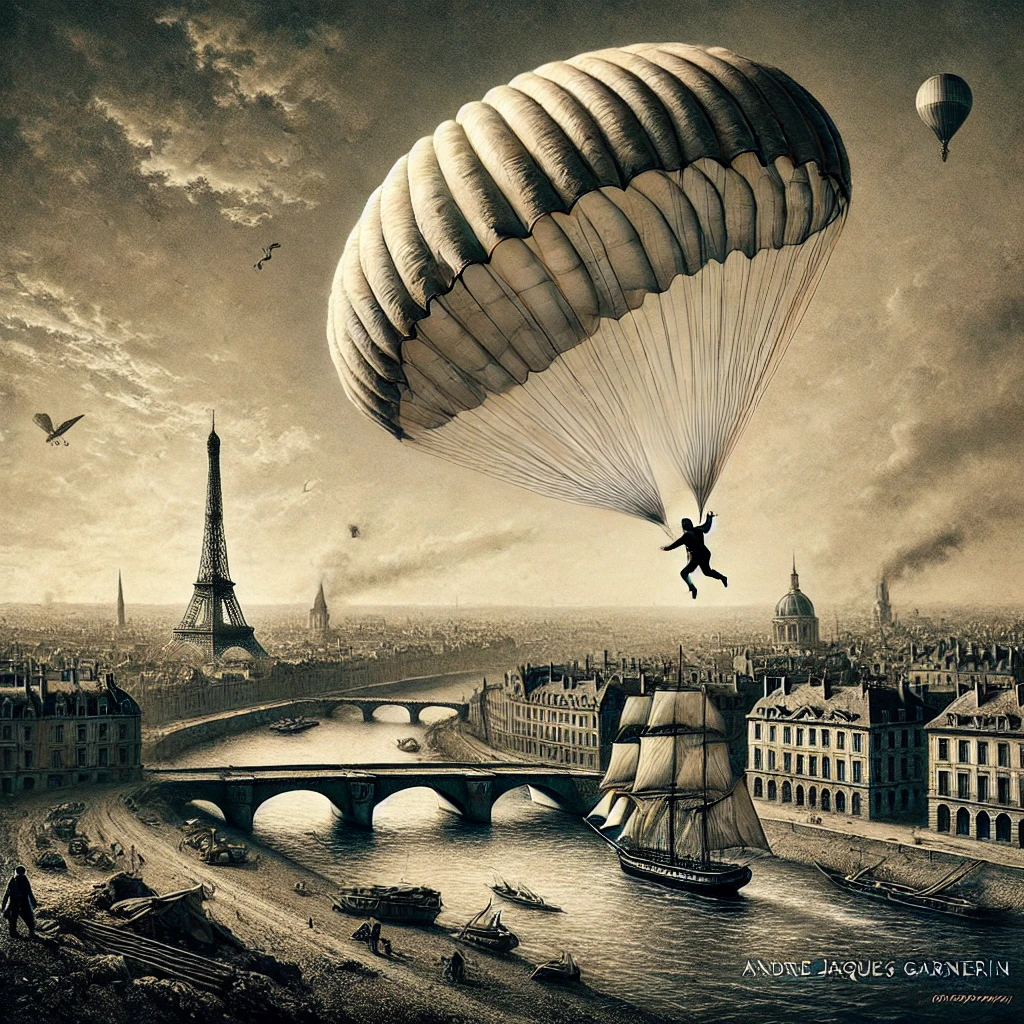On October 22, 1797, a significant milestone in aviation history occurred when André-Jacques Garnerin made the first successful parachute jump from a height of approximately 3,200 feet over Paris, France. This daring feat not only demonstrated the feasibility of parachute technology but also captured the imagination of a public fascinated by the possibilities of human flight. Garnerin’s jump marked the beginning of a new era in aerial experimentation, paving the way for future advancements in parachuting and aviation.

The Vision of André-Jacques Garnerin
André-Jacques Garnerin was a French balloonist and inventor who had a keen interest in exploring the possibilities of aerial travel. Inspired by the recent developments in ballooning and the concept of descending safely from great heights, Garnerin began experimenting with parachute designs. His invention featured a silk canopy and a conical shape, designed to slow descent and allow for a safe landing.
Before his historic jump, Garnerin had already made a name for himself as a pioneer in ballooning, successfully completing several ascents. However, he recognized the need for a reliable means of descent, which led to his focus on parachute design. Garnerin’s vision was ambitious: to create a device that would enable people to escape danger from high altitudes and ultimately open the door to recreational parachuting.

The Historic Jump
On that fateful day in October, Garnerin prepared for his jump from a balloon high above the Parisian skyline. As spectators gathered to witness this unprecedented event, he ascended into the sky, filled with both excitement and trepidation. With the parachute securely attached, Garnerin cut himself free from the balloon and began his descent.
As he floated gently to the ground, Garnerin’s parachute deployed successfully, showcasing the effectiveness of his design. The crowd erupted in applause and amazement as he landed safely in the Parc Monceau, a park in Paris. Garnerin’s successful jump not only validated his invention but also sparked widespread interest in parachuting as a potential means of escape and adventure.
The Impact of the First Parachute Jump
Garnerin’s leap marked a significant advancement in the field of aeronautics and opened the door for further exploration of parachute technology. His successful demonstration inspired others to experiment with parachute designs, leading to improvements in safety and functionality. In the years following his jump, various inventors and enthusiasts began to refine and innovate parachute designs, paving the way for modern parachuting as we know it today.

The public’s fascination with aviation and parachuting grew in the wake of Garnerin’s jump, leading to increased interest in ballooning and aerial exploration. The idea of human flight, once relegated to the realm of fantasy, became an achievable reality. Garnerin’s achievement captured the spirit of the time, reflecting the age’s enthusiasm for scientific discovery and technological advancement.
Legacy and Modern Parachuting
The legacy of André-Jacques Garnerin’s first parachute jump is still felt today, as parachuting has evolved into a popular recreational activity and a critical component of military operations. Modern parachuting techniques and equipment have advanced significantly since 1797, with innovations in materials, design, and safety protocols enhancing the experience for jumpers.
Today, parachuting is not only a thrilling adventure sport but also a vital tool for emergency responders and military personnel. Skydiving schools around the world offer training and certification for enthusiasts, continuing the tradition of exploration and risk-taking that Garnerin embodied. His pioneering spirit remains a source of inspiration for those who seek to push the boundaries of human capability.
The first successful parachute jump by André-Jacques Garnerin on October 22, 1797, marked a pivotal moment in the history of human flight. His innovative spirit and determination to explore the possibilities of aerial descent opened the door for future advancements in parachuting and aviation. As we reflect on this historic achievement, we celebrate Garnerin’s legacy and the ongoing pursuit of exploration and innovation in the field of flight. His daring leap not only changed the course of aviation history but also sparked a lasting fascination with the possibilities of human achievement in the skies.
